The Tour de France is the cycling event with the largest number of viewers and huge media coverage. This means that both sponsors and brands related to cycling are involved in the Tour, showcasing their new products. The Tour, however, was actually created to promote a newspaper; and it was, indeed, a success, not only for the newspaper L’Auto but also for the bike and component brands. Just ask Campagnolo, Pinarello, Trek or any of the small manufacturers who, as we shall see, were lucky enough to have their invention approved by the Tour organizers. We are going to look at those inventions, changes and innovations as we go over the evolution of bicycles from the first Tour to the present day.
No brakes and at full speed

We could say that the first Tour de France winning bicycle in 1903 was half-fixie half-gravel. A steel bicycle, with fixed gear, wooden rims, 32-38 mm wide tires, leather saddle and a handlebar that resembles some current gravel models. The key important thing to keep in mind was that when riding fixed gear, you could not coast unless you took your feet off the pedals and that the only way to brake was by applying back pressure to the pedals to slow down the bike.
Freewheel freedom
When the mountain stages appeared in the Tour de France, the freewheel came into use. This was despite the fact that Henri Desgrange (organizer of the Tour), a large part of the press and many riders felt that being able to coast decreased the difficulty of the race, diminished the differences between cyclists and added complexity to the bicycles due to possible breakdowns.
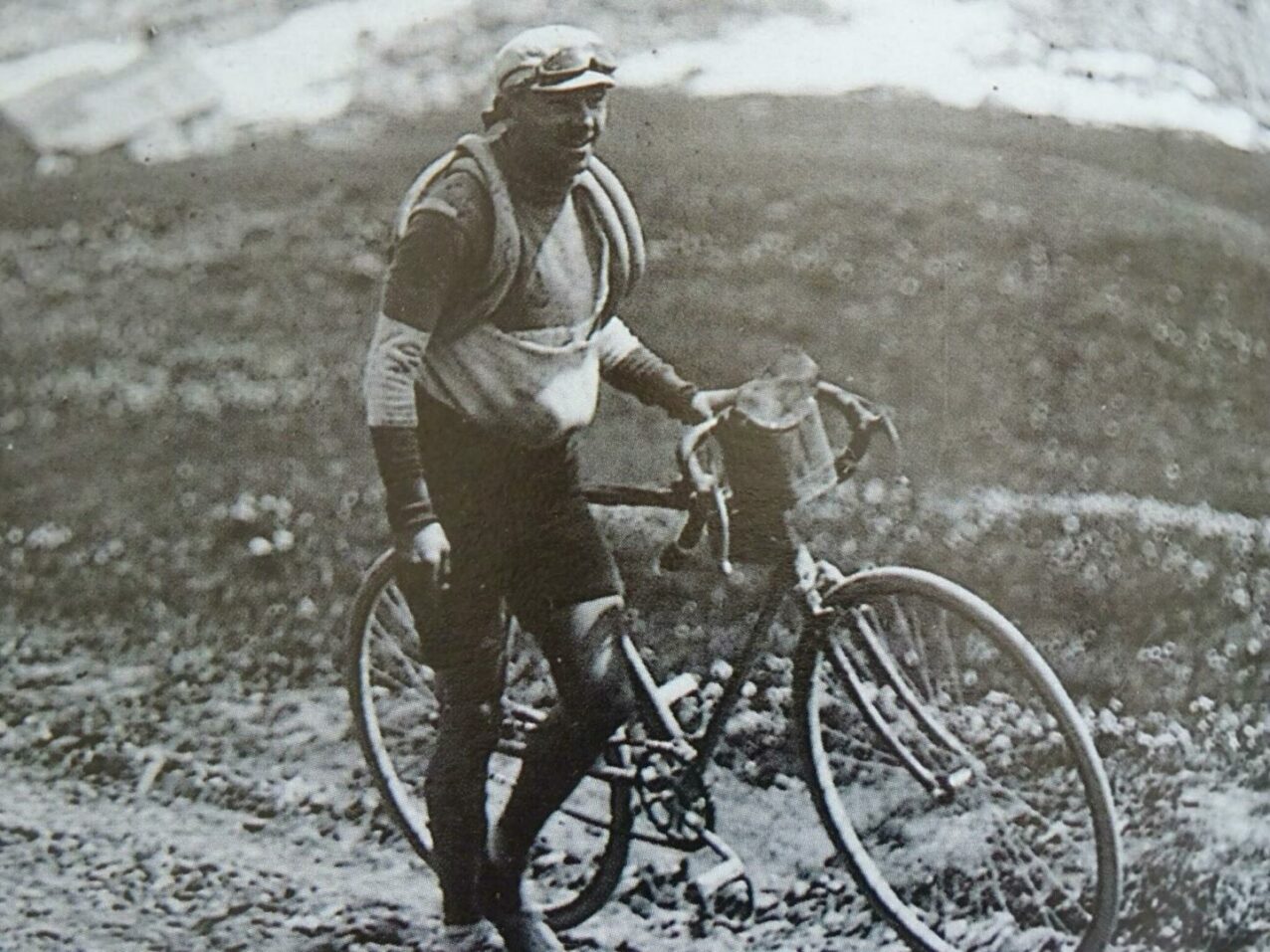
It was the dangerous nature of descents that eventually led to the widespread use of freewheels. Another important factor was the improvement of brakes, which gradually changed from rod-operated brakes on the tire or rim to caliper brakes, often similar to today’s brakes, operated by cable and braking on the rim.
It’s time to switch
Remarkably, although bicycle dérailleurs had been around since before the first Tour, it was not until 1937 that the Tour director allowed them to be used by all riders in the race. Until then, they could only be used by participants in the isolé (independent) category. In 1912, the first dérailleur of the Tour appeared on the bicycle of the isolé cyclist (or rather cyclotourist) Joanny Panel. The derailleur was charmingly called Le Chemineau, as opposed to today’s names such as Dura-Ace 9150.

In 1937 the final change took place and all riders were allowed to use only one model of dérailleur : the Super Champion from the Swiss rider and manufacturer Oscar Egg. Who knows if there was an agreement, contract and commission deal between organizers and manufacturer, but the fact is that the 1937 winner (Roger Lapébie) and 1939 winner (Sylvere Maes) used this derailleur and the sales of the Super Champion skyrocketed.
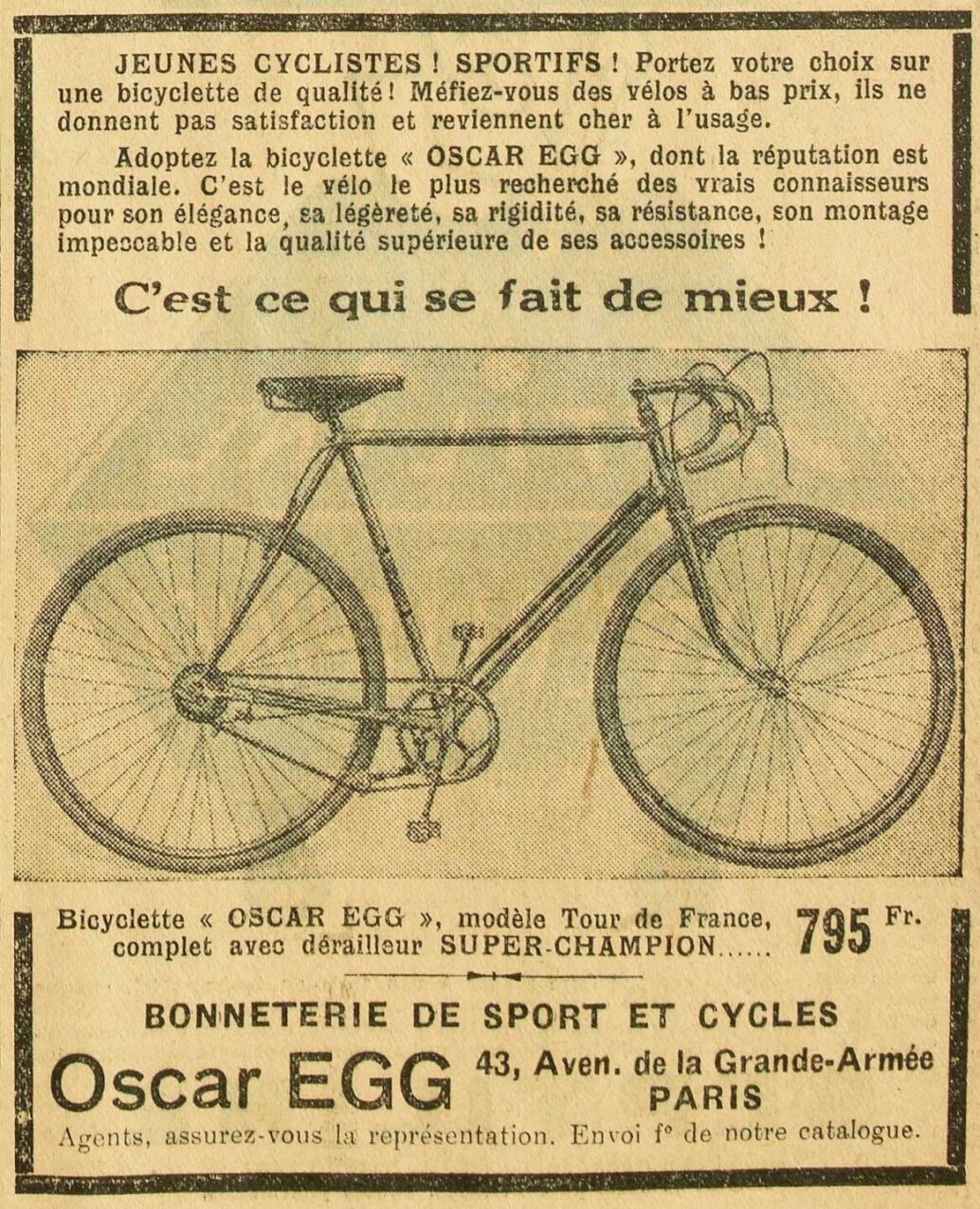
It was a game changer at the time. Not only because it had 3 or 4 gears, but also because you could change gears without having to stop, remove/reattach the wheel and adjust the chain tension.
Gear evolution
Since that first 1937 dérailleur, gears have evolved to such an extent that today’s electronic systems are so precise, fast, reliable and have such a gearing range that Desgrange would struggle to find a challenge as difficult as that 1910 Luchon – Bayonne stage. But that Super Champion bears little resemblance to what we get today. In the meantime, small but noteworthy technological evolutions have taken the gears from 3 to 24 and the shifters from the seat stays to the current shifters. These are the most significant changes:
Dropout parallelogram derailleur
Tullio Campagnolo refined (copied and improved) already existing derailleurs and in 1949 he launched the first prototype of the Gran Sport model, a derailleur whose shape and performance could be considered as “modern”; it won its first Tour in 1951. By then, the shifters were already being placed on the downtube in order to operate both the rear derailleur and the front derailleur by pulling cables.
Indexing gears
Nowadays, when we change gears in a mechanical shifting system, we hear a click. Well, it seems simple and we take it for granted, but this was not the case until the mid 80s. Until then, it was a matter of tension and friction. The rider would adjust the shifter or lever until he reached the desired gear, without hearing a click. When Shimano introduced SIS (Shimano Index System) it increased the speed, precision and reliability of shifting gears. Other manufacturers (Campagnolo, Mavic and SunTour) copied the idea and indexed the gears.
Integrated shifters
When Shimano launched the Dura-Ace 7400 with STI (Shimano Total Integration) in 1990, they revolutionized the look of bicycles by eliminating the shifters from the downtube in the frame and integrating them with the brake levers on the hoods of the handlebars for even faster shifting. A year later, Campagnolo went one step further towards aero design by routing the cables towards the handlebar so that they would be hidden under the bar tape.

Electronic shifting

This solution first appeared in 1993 with Tony Rominger and 1994 with Chris Boardman. Both used Mavic’s Zap electronic groupset and despite the undeniable success (the Englishman won the Prologue and wore the yellow jersey after riding the 7.2 km at over 55 km/h), the innovation didn’t quite catch on with the peloton.

When Shimano introduced the Dura-Ace 7970 with Di2 (Digital Integrated Intelligence) in 2009 some people thought it unnecessary (team mechanics, however, greatly approved of the idea), but its reliability, speed and comfort plus Cadel Evans’ overall victory in the 2011 Tour de France settled the issue.
Since then, only Vincenzo Nibali won the Tour in 2014 using mechanical shifting. Even that was probably a question of mere coincidence because at that point, Campagnolo (the brand that Nibali’s team was riding) was already using electronic groupsets in their bikes; it was probably the last time that a cable operated a gear shift on the bike of a Tour winner.
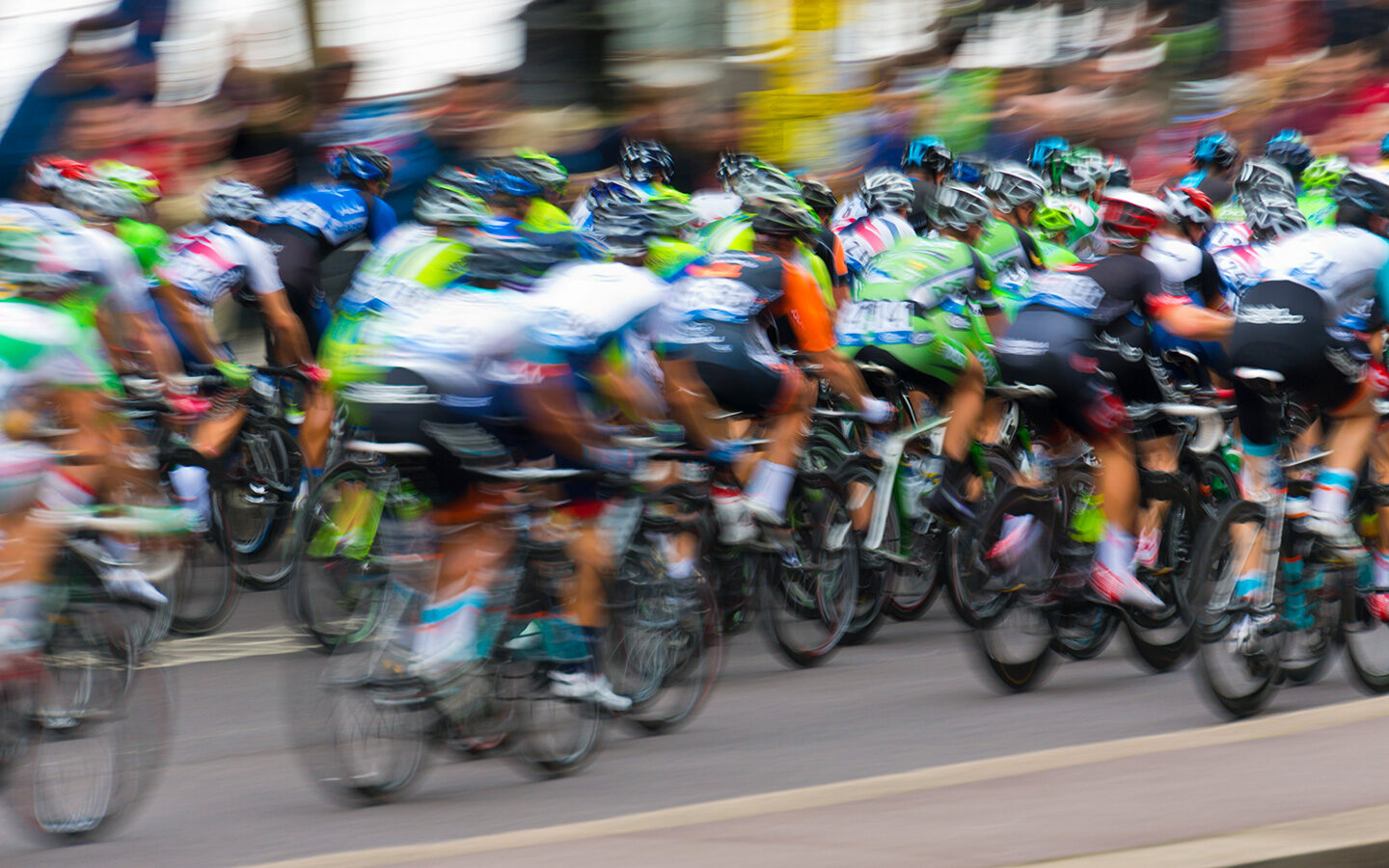
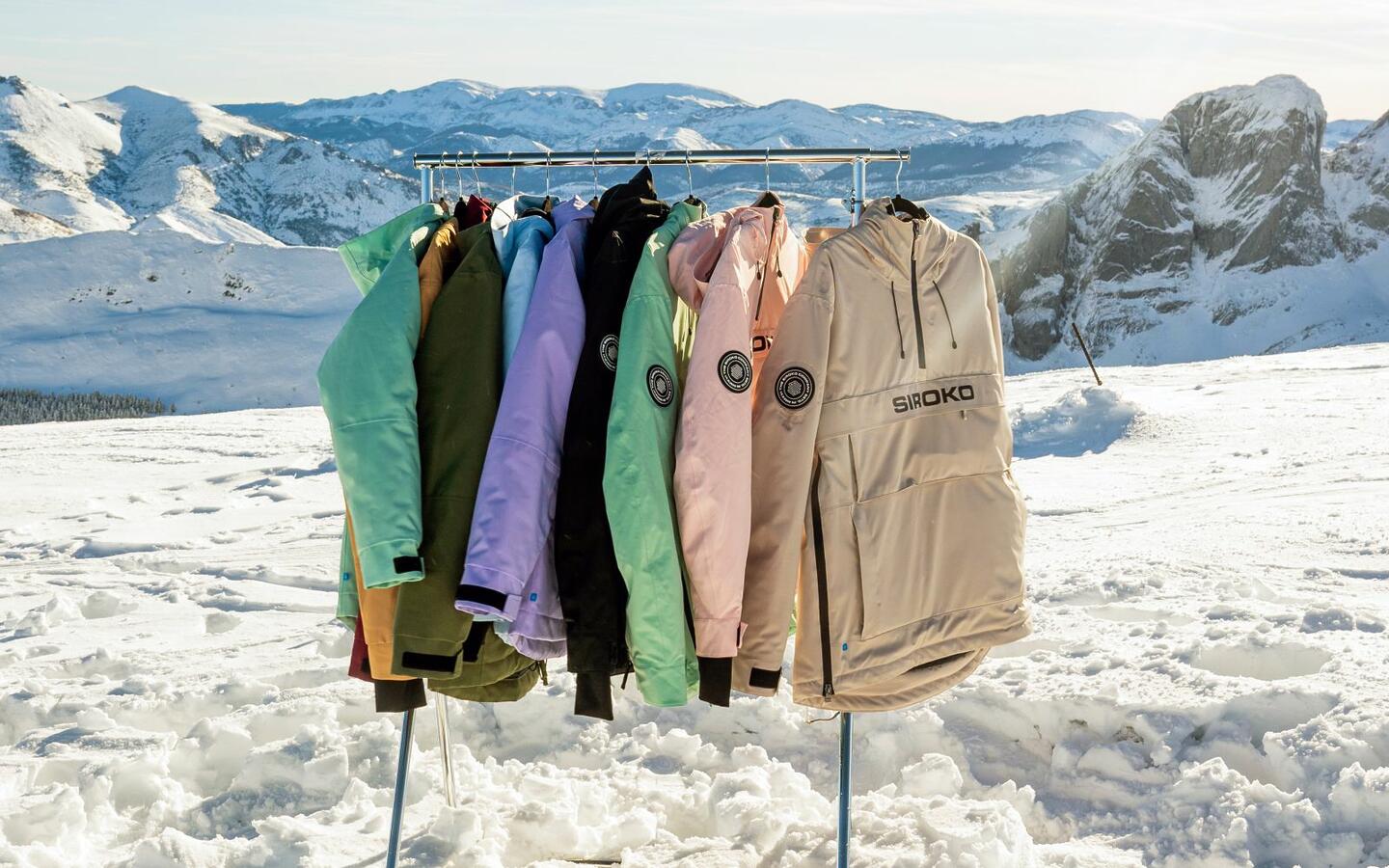

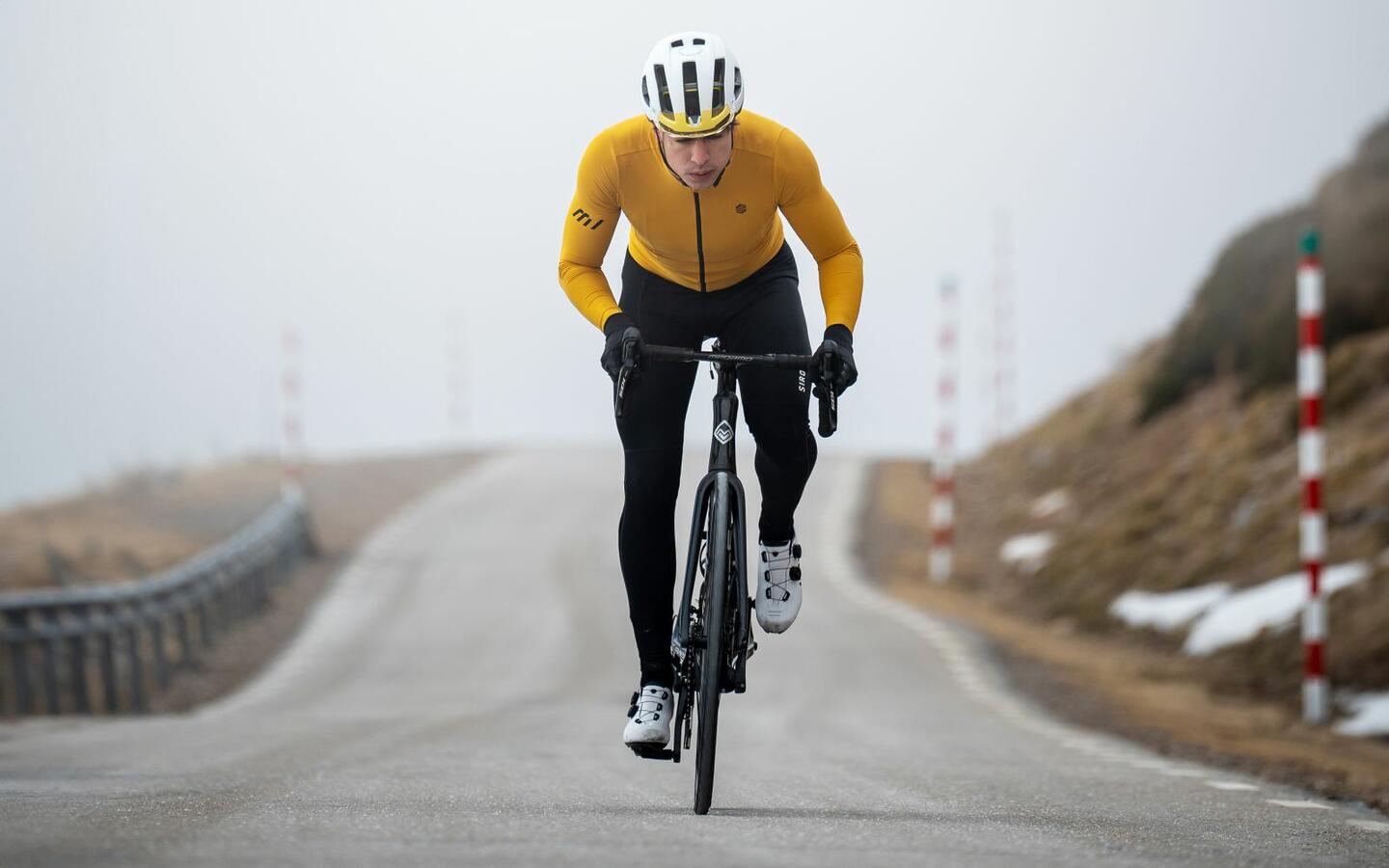
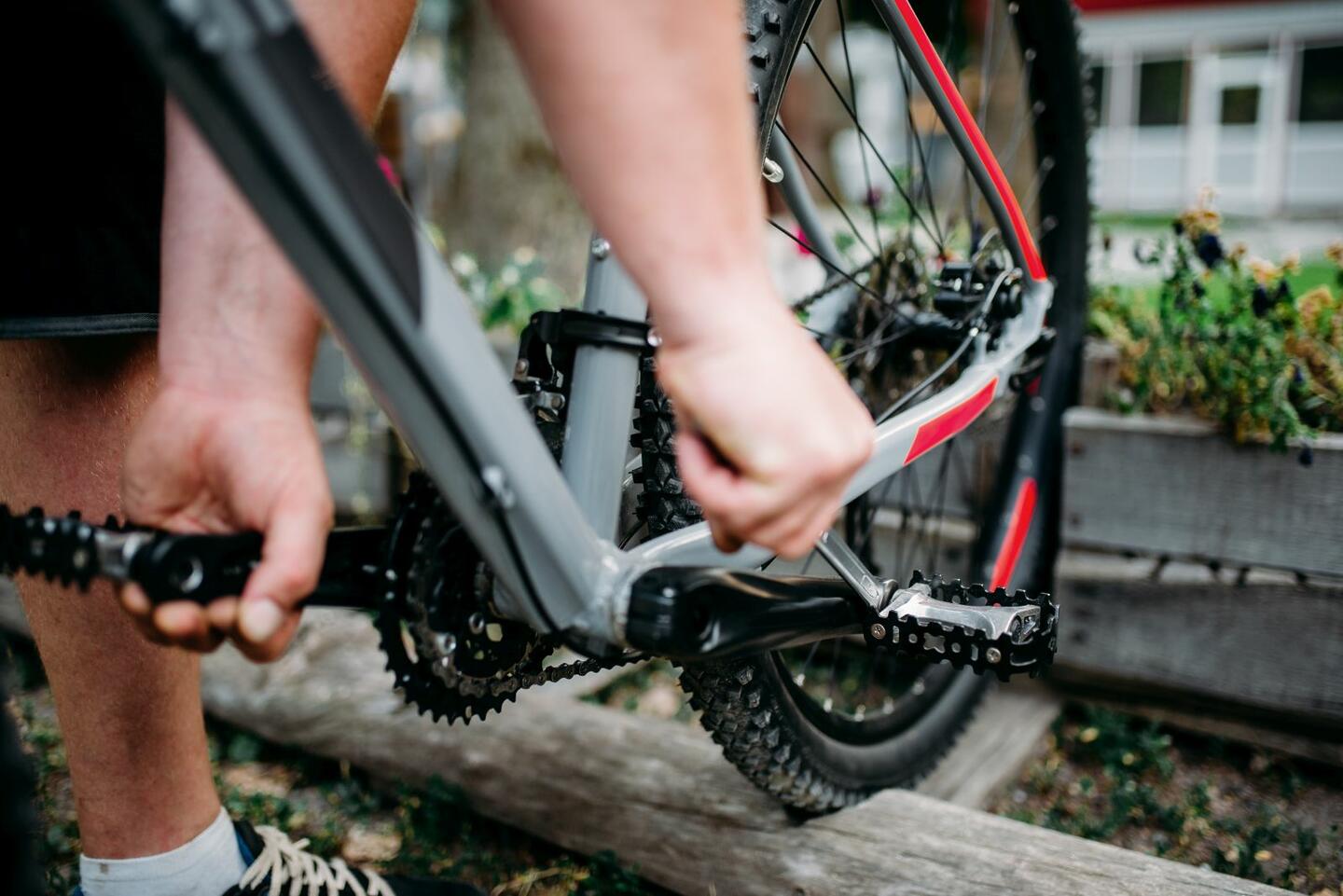
Hello,
Interesting read, the part 1 of TdF bicycles. I could not find a link to part 2 (and more ?) to maybe/hopefully cover the frames materials and construction etc, thanks !.
Hello Peter,
Thanks for your comment.
Here you have the second parte:
https://www.siroko.com/blog/c/tour-de-france-bikes-history-part-two/
Enjoy it!
what gear ratio did those early riders use i.e. chain ring size and the two different sprockets ,both when it was a fixed gear and when they introduced the free wheels. Thank you
Hello Mick,
It depends on the rider and the brand, but the most common chainrings were 44, 46 and 48. The sprockets had 18, 20 and 22 dents. They did not change with the freewheel, they simply had a fixed side with one size sprocket and another size on the freewheel side.
If you want to check sizes and specifications there is a French blog with a lot of technical information.
http://velosvintage.over-blog.com/
Best
Siroko